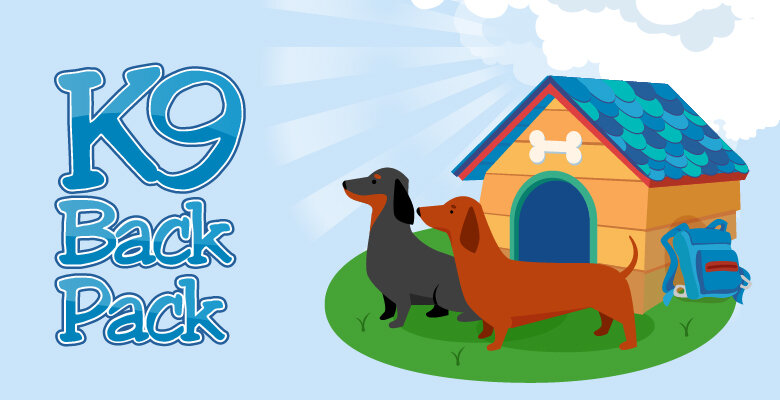Bladder Control
There is no substitute for good veterinary care.
This information is for educational purposes only and should NOT be used in place of consultation with your veterinarian.
Does Your Dog Have Bladder Control?
WHY YOU NEED TO KNOW IF YOUR DOG HAS BLADDER CONTROL
If your dog is having a disc episode, one of the most important things you need to know quickly is: does my dog have bladder control? The reason why is because *IF* your dog does not have bladder control, you will need to express his/her bladder to prevent a urinary tract infection which can turn very serious very quickly.
DON’T THINK BECAUSE YOUR DOG URINATES IN THEIR BED, THEY HAVE BLADDER CONTROL
Dogs are born with certain instincts and one of them is to keep their “den” clean and free of their elimination and its odor to protect themselves from predators which would be attracted to their den from the scent. They also hate to be close to their own pee and poop for this same reason. Therefore, a dog with bladder control will not voluntarily pee in his/her own bed - it goes completely against their instincts. Puppy mill dogs may be one of the few exceptions and may pee or poop in their bedding due to the way they were raised.
Normally though, a dog won't, of his/her own free will, pee or poop in their bed unless
They don't have bladder control.
They were left in their bed rest den too long and they simply could not hold it any longer.
HOW DO I FIND OUT IF MY DOG HAS BLADDER CONTROL?
You need proof that your dog’s bladder and brain can chat with each other via the spinal cord. This is where the “sniff and pee” test comes in! It is the gold-standard test to see if your dog has bladder control because if the dog can sniff an old, favorite potty area and then start to pee, then you know that the brain and bladder were able to talk to each other.
HOW TO DO THE “SNIFF-AND-PEE” TEST: YOU WILL NEED A SLING
Make sure and give your dog about ¼ cup of water or low-sodium broth diluted with water about an hour or an hour and a half before trying the sniff-and-pee test. Carry your dog out and carefully place them down in a favorite potty area.
If your dog can walk, limit its movement by using a harness and a 6-foot leash. If your dog gets too excited seeing the harness and leash, set up a designated potty area with either an ex-pen or some inexpensive garden fencing that sticks into the ground to build about a 6-foot area.
If your dog cannot walk, slip a sling under his/her belly close to the rear legs. A sling can be a men’s neck tie, a rolled-up woman’s scarf, or a very thin and narrow piece of sheet or inexpensive fleece blanket you cut up. It doesn’t have to be fashionable – just functional. Males seem to tolerate a figure-8 sling better since it does not cover their maleness as much as some of the other options. A figure-8 sling can be made out of 2 inexpensive leashes joined by vet wrap or an ACE bandage. Here is an example:
Legs go through the figure 8 made by the two
handles joined by the ACE bandage in the middle.
You want it long enough so that you can stand straight up and not have to bend over which will help save your back while supporting his or hers. Hold the sling taut enough so that his/her back is straight and level. Don’t jack up the rear end like a wheel barrel. Your dog will be able to move using his/her her front legs with you supporting the rear end with the sling.
Let your dog sniff around in the favorite potty area and wait and see if he/she can start to pee. If so, your dog has bladder control. If your dog looks around like “Ho Hum. Are we done yet?” then take him/her back in and try again in about an hour. Carry them back out and repeat the sniff-and-pee test. If your dog has urinated in the bed rest den in the meantime, your dog does not have bladder control. The bottom line is that if you are taking your dog out every 3 to 4 hours and trying the test and your dog does not ever start urinating on their own but you find his/her bedding wet, or they pee on you when you pick them up - then they more than likely do not have bladder control. You’ll need to get an expressing demonstration from your vet.
No Bladder Control?
Why You Need To Express Your Dog’s Bladder
If your dog is paralyzed and does not have bladder control, your dog cannot feel when his/her bladder fills up and needs to go pee. Because the bladder is somewhat elastic, it will expand as it continues to fill up more and more. At the point it cannot expand any bigger to hold more urine, the urine will overflow out. There are several things that can happen from allowing a dog’s bladder to overflow.
A urinary tract infection (UTI) develops. When the bladder just overflows because it got too full, all of the urine that was in the bladder does not get completely emptied out because the muscles in the bladder can't push all of the urine out. That old urine left sitting in the bladder starts growing bacteria which breeds and turns into a UTI.
UTIs develop quickly – within just a few days and they can turn serious very quickly as well. A dog’s health can spiral downward if the infection goes untreated and begins to spread throughout the dog’s body.(Don’t worry, the infection does not spread throughout the body within a few days.)
The bladder can get stretched out to the point that it will no longer be as elastic as it was. Without that elasticity and muscle tone, the bladder may not be able to hold urine in the future if the dog regains bladder control.
DON’T PANIC!! YOU WILL BE ABLE TO EXPRESS YOUR DOG’S BLADDER!!
You CAN do it! Expressing is a skill which takes practice and more practice. Within a week, you will have the technique perfected!
You need to get a *hands-on* demonstration by the vet or a vet tech so you learn to feel the bladder and how much pressure to apply to allow the bladder to release urine. During the demo, have them put their hands over yours and guide your hands so that YOU feel the bladder and how much pressure to apply. Just watching them to do does not give you a good *feel* for how to do it.
TIP: make sure your dog has had some water or low-sodium broth about an hour or an hour and a half before going for the demo because it is much easier to feel a full bladder than an emptier one. The demo will be much more beneficial!
Don’t feel bad about going back to the vet to get as many more demos as you need! That old saying, “If at first you don’t succeed, try, try again” certainly applies to expressing a dog’s bladder.
Here is a video with good information for you to review prior to getting a hands-on demo at the vet: http://www.youtube.com/watch?v=CAaLdeJCIkw
BE KIND AND PATIENT WITH YOURSELF!!! Do NOT expect perfection right off the bat!

